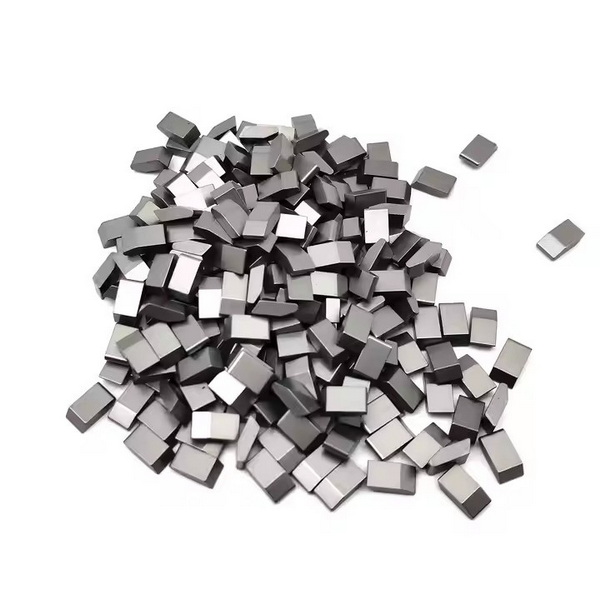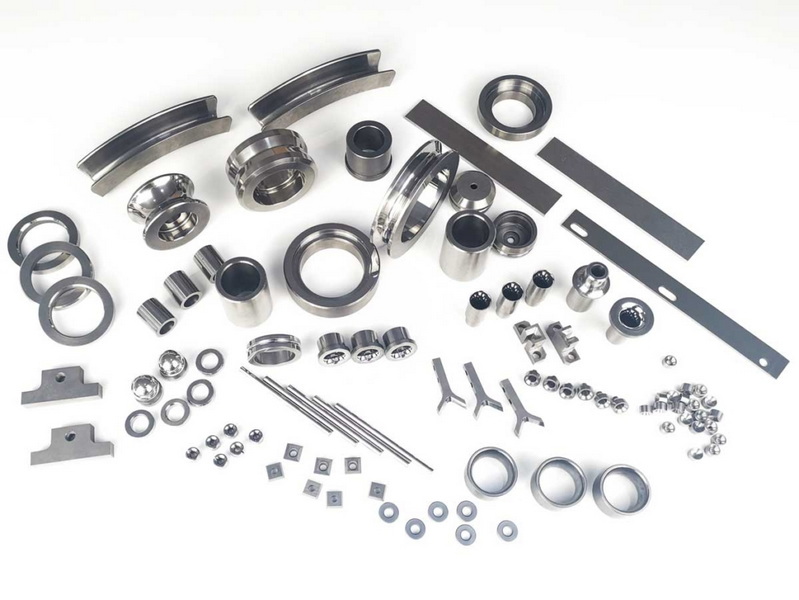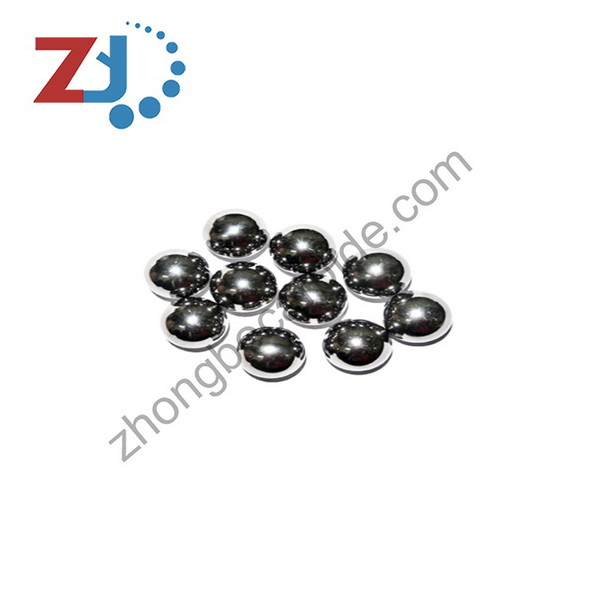Content Menu
● What is Tungsten Carbide?
>> Composition and Structure
>> Manufacturing Process
● Key Properties of Tungsten Carbide
>> Hardness and Strength
>> Thermal Properties
>> Chemical Stability and Corrosion Resistance
>> Friction and Wear Resistance
● Applications of Tungsten Carbide
>> Cutting Tools and Machining
>> Wear-Resistant Parts
>> Jewelry
>> Aerospace and Aviation
>> Oil and Gas Production
>> Other Applications
● Advantages of Tungsten Carbide
>> High Durability
>> Cost-Effectiveness
>> Versatility
>> Chemical and Thermal Stability
● Conclusion
● FAQ About Tungsten Carbide
>> 1. What is the primary composition of tungsten carbide?
>> 2. How hard is tungsten carbide compared to other materials?
>> 3. In which industries is tungsten carbide commonly used?
>> 4. What are the key advantages of using tungsten carbide?
>> 5. How does tungsten carbide resist wear and corrosion?
● Citations:
Tungsten carbide is a compound renowned for its exceptional hardness, durability, and versatility. Its unique properties make it indispensable in various industries, from aerospace to jewelry. This article delves into the characteristics, applications, and benefits of tungsten carbide, providing a comprehensive understanding of why it is considered a supercharged metal.

What is Tungsten Carbide?
Tungsten carbide (WC) is a chemical compound comprising equal parts of tungsten and carbon atoms[8]. It typically appears as a gray powder, which can be pressed and shaped into various forms through a process called sintering[8]. This process involves heating the powder to a high temperature, bonding the particles together to create a solid, dense material[8].
Composition and Structure
The chemical formula for tungsten carbide is WC. The compound can exist in two crystalline forms: hexagonal and cubic, depending on the temperature during its creation[1]. The hexagonal structure is the most common at room temperature and contributes to the material's notable mechanical properties[1]. The lattice constants for the hexagonal structure are a = 2.900 Å and c = 2.831 Å, indicating a compact arrangement of atoms within the crystal lattice[1].
Manufacturing Process
Tungsten carbide is produced by reacting tungsten metal with carbon at high temperatures, typically between 1500°C and 2000°C[1]. This ensures that the compound is fully formed[1]. Alternative synthesis methods include reacting tungsten hexafluoride with methane or methanol in the presence of hydrogen, offering flexibility in manufacturing approaches[1].
Key Properties of Tungsten Carbide
Tungsten carbide's exceptional properties make it a sought-after material in numerous applications. These properties include hardness, strength, thermal stability, and chemical resistance.
Hardness and Strength
Tungsten carbide is exceptionally hard, ranking between 9 and 9.5 on the Mohs hardness scale[1][3]. This makes it nearly as hard as diamond and significantly harder than steel[1][3]. Its Vickers hardness number is around 2600, underscoring its remarkable resistance to indentation[1]. The Brinell hardness of tungsten carbide is approximately 25000 BHN (converted), further demonstrating its superior hardness[6].
The material also exhibits very high compressive strength, surpassing virtually all melted, cast, or forged metals[4][7]. Its stiffness is nearly three times that of steel, making it highly resistant to bending and stretching[1]. Tungsten carbide has a Young's modulus of approximately 530–700 GPa, reflecting its ability to withstand significant stress without deformation[1]. The ultimate tensile strength is about 344 MPa[1].
Thermal Properties
Tungsten carbide is well-suited for high-temperature applications due to its outstanding thermal properties. It has a high melting point of 2,870 °C, allowing it to be used in environments where extreme heat is common[1]. The material's thermal conductivity is 110 W/m·K, enabling efficient heat transfer[1]. Additionally, its coefficient of thermal expansion is 5.5 μm/m·K, meaning it expands very little with temperature changes[1].
Chemical Stability and Corrosion Resistance
Tungsten carbide exhibits excellent chemical stability, resisting attacks from most acids[1]. It is also highly resistant to corrosion, enduring a wide range of acidic and alkaline environments[1]. While it is resistant to most acids, it can be attacked by a mixture of hydrofluoric and nitric acids above room temperature[1]. It reacts with fluorine gas at room temperature and with chlorine above 400 °C[1]. Oxidation of tungsten carbide begins at 500–600 °C, forming tungsten trioxide (WO₃) at higher temperatures[1].
Friction and Wear Resistance
Tungsten carbide compositions exhibit low dry coefficient of friction values compared to steels[4]. They also have exceptional resistance to galling and welding at the surface[4]. Tungsten carbide wears up to 100 times longer than steel in conditions including abrasion, erosion, and galling[4].
Applications of Tungsten Carbide
The unique combination of properties makes tungsten carbide valuable across a wide range of industries. Its applications span from cutting tools and wear-resistant parts to jewelry and aerospace components.
Cutting Tools and Machining
One of the primary applications of tungsten carbide is in cutting tools[2]. Its exceptional hardness and wear resistance significantly extend the service life of tools used in high-speed machining operations[2]. Tungsten carbide tools are used for cutting various materials, including metals, composites, and plastics[2].
Wear-Resistant Parts
Tungsten carbide is used to manufacture wear-resistant parts that withstand harsh conditions[5]. These parts are utilized in industries such as oil and gas, mining, and construction[2][5]. Components like drill bits, valve stems, and pump parts benefit from tungsten carbide coatings, which extend their lifespan in abrasive, high-pressure environments[2].
Jewelry
Tungsten carbide has gained popularity in the jewelry industry due to its durability and scratch resistance[3][8]. Tungsten carbide rings are a popular choice for those seeking a long-lasting and low-maintenance option[3][9]. The material's hardness ensures that the jewelry retains its luster and finish over time[3][9].
Aerospace and Aviation
The aerospace and aviation industries use tungsten carbide coatings to protect critical engine components from wear[2]. These coatings are applied to turbine blades, compressor seals, and landing gear components[2]. The material's ability to maintain its strength and integrity under severe stress and erosive conditions makes it ideal for protecting hardware against erosion, abrasion, and impact damage[2].
Oil and Gas Production
In the oil and gas industry, tungsten carbide coatings protect drilling equipment and production components[2]. These coatings extend the life of drill bits, valve stems, and pump components operating in abrasive, high-pressure environments[2]. The material's exceptional wear resistance and corrosion protection capabilities help maintain equipment integrity in deep-well drilling operations[2].
Other Applications
Tungsten carbide is also used in various other applications, including:
- Kiln furnace structural materials[5]
- Jet engine components[5]
- Cermet materials[5]
- Resistance heating elements[5]
- Surgical instruments[10]
- Fishing weights[11]
- Trekking and ski poles[11]
- Radiation shielding materials[11]

Advantages of Tungsten Carbide
Tungsten carbide offers several advantages over other materials, making it a preferred choice in many applications.
High Durability
Tungsten carbide's exceptional hardness and wear resistance make it highly durable[1][3]. It can withstand harsh conditions and maintain its structural integrity over extended periods[1][3].
Cost-Effectiveness
Although the initial cost of tungsten carbide may be higher than some other materials, its longevity and reduced need for replacement make it a cost-effective solution in the long run[2]. Its superior performance translates to reduced downtime and improved operational efficiency[2].
Versatility
Tungsten carbide can be tailored to meet the specific needs of various applications[5][11]. It can be combined with other metals, such as nickel, iron, silver, and copper, to create specialized alloys and composite materials[11].
Chemical and Thermal Stability
Tungsten carbide's chemical stability and corrosion resistance make it suitable for use in harsh chemical environments[1]. Its high melting point and thermal conductivity also make it ideal for high-temperature applications[1].
Conclusion
Tungsten carbide is a remarkable material known for its exceptional hardness, durability, and versatility. Its unique combination of properties makes it indispensable in a wide range of industries, including aerospace, oil and gas, manufacturing, and jewelry. Whether used in cutting tools, wear-resistant parts, or protective coatings, tungsten carbide offers superior performance and longevity. As technology advances, the applications of tungsten carbide are expected to expand further, solidifying its position as a critical material in modern industry.

FAQ About Tungsten Carbide
1. What is the primary composition of tungsten carbide?
Tungsten carbide is primarily composed of equal parts of tungsten and carbon atoms (WC)[8].
2. How hard is tungsten carbide compared to other materials?
Tungsten carbide ranks between 9 and 9.5 on the Mohs hardness scale, making it nearly as hard as diamond and significantly harder than steel[1][3].
3. In which industries is tungsten carbide commonly used?
Tungsten carbide is commonly used in industries such as aerospace, oil and gas, manufacturing, construction, and jewelry[2][3][5][10].
4. What are the key advantages of using tungsten carbide?
The key advantages of using tungsten carbide include its high durability, cost-effectiveness, versatility, and chemical and thermal stability[1][2][3][11].
5. How does tungsten carbide resist wear and corrosion?
Tungsten carbide exhibits excellent chemical stability, resisting attacks from most acids, and is highly resistant to corrosion, enduring a wide range of acidic and alkaline environments[1]. Its hardness and binder metals like cobalt create dense oxide films that enhance toughness and resistance[1].
Citations:
[1] https://shop.machinemfg.com/tungsten-carbide-an-overview/
[2] https://www.linde-amt.com/resource-library/articles/tungsten-carbide
[3] https://metalstek.com/tungsten-carbide/
[4] https://carbideprocessors.com/pages/carbide-parts/tungsten-carbide-properties.html
[5] https://www.refractorymetal.org/tungsten-carbide-uses-properties.html
[6] https://material-properties.org/tungsten-carbide-density-strength-hardness-melting-point/
[7] https://www.imetra.com/tungsten-carbide-material-properties/
[8] https://eurobalt.net/blog/2022/03/28/all-the-applications-of-tungsten-carbide/
[9] https://blog.theartisanrings.com/tungsten-vs-tungsten-carbide-the-ultimate-comparison-guide/
[10] https://www.tungco.com/insights/blog/5-tungsten-carbide-applications/
[11] https://www.carbide-usa.com/top-5-uses-for-tungsten-carbide/
















